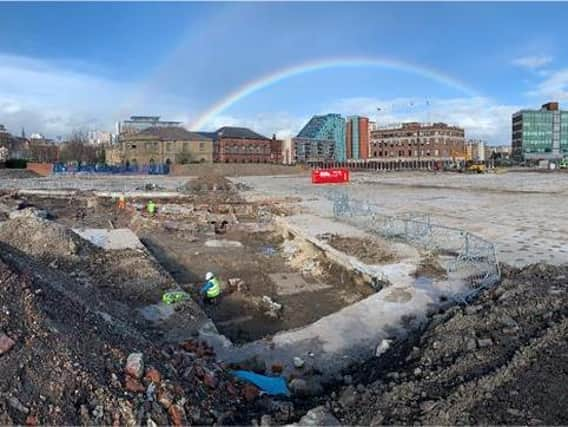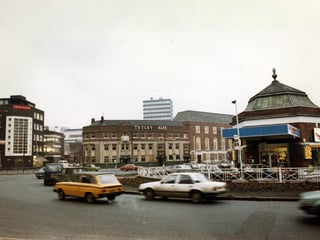Archaeologists discover hidden beer on old Leeds brewery site


More than 600 neatly stacked beer bottles were found hidden under an old set of cellar stairs in the Scarborough Castle Inn.
The area under investigation lies within the site of the former Tetley’s brewery which is in the process of being redeveloped into a vibrant, connected, sustainable mixed use neighbourhood.
Advertisement
Hide AdAdvertisement
Hide AdThe bottles are from a range of brewers, the highest proportion are labelled J. E. Richardson of Leeds,
Several of the bottles contained liquid which experts from Archaeological Services WYAS initially believed was ginger beer.
Samples were sent to West Yorkshire Joint Services for analysis and the results showed that the liquid was not only alcoholic but contained a high level of lead. A potential causes for this could have been lead pipes contaminating the water supply used to brew the beer.
The excavation is being undertaken to examine an area spanning the former line of Hunslet Lane on the southern approach to during the medieval and later periods.
Advertisement
Hide AdAdvertisement
Hide AdAlong with the road, there are the remains of the Scarborough Castle Inn, properties along the former South Terrace and workers housing have been targeted for excavation.
This excavation is providing archaeologists with a rare chance to explore the social development of this part of Leeds from the late medieval period through to modern day.
David Williams, at Archaeological Services WYAS, said: “This excavation is giving us a great opportunity to uncover a part of Georgian and Victorian Leeds. The results so far are giving a real insight to the daily lives of the former residents of Leeds during this period.”
The excavations are due to be completed over the next fortnight after which the artefacts will be processed by Archaeological Services WYAS and a report of the findings published.
Comment Guidelines
National World encourages reader discussion on our stories. User feedback, insights and back-and-forth exchanges add a rich layer of context to reporting. Please review our Community Guidelines before commenting.
